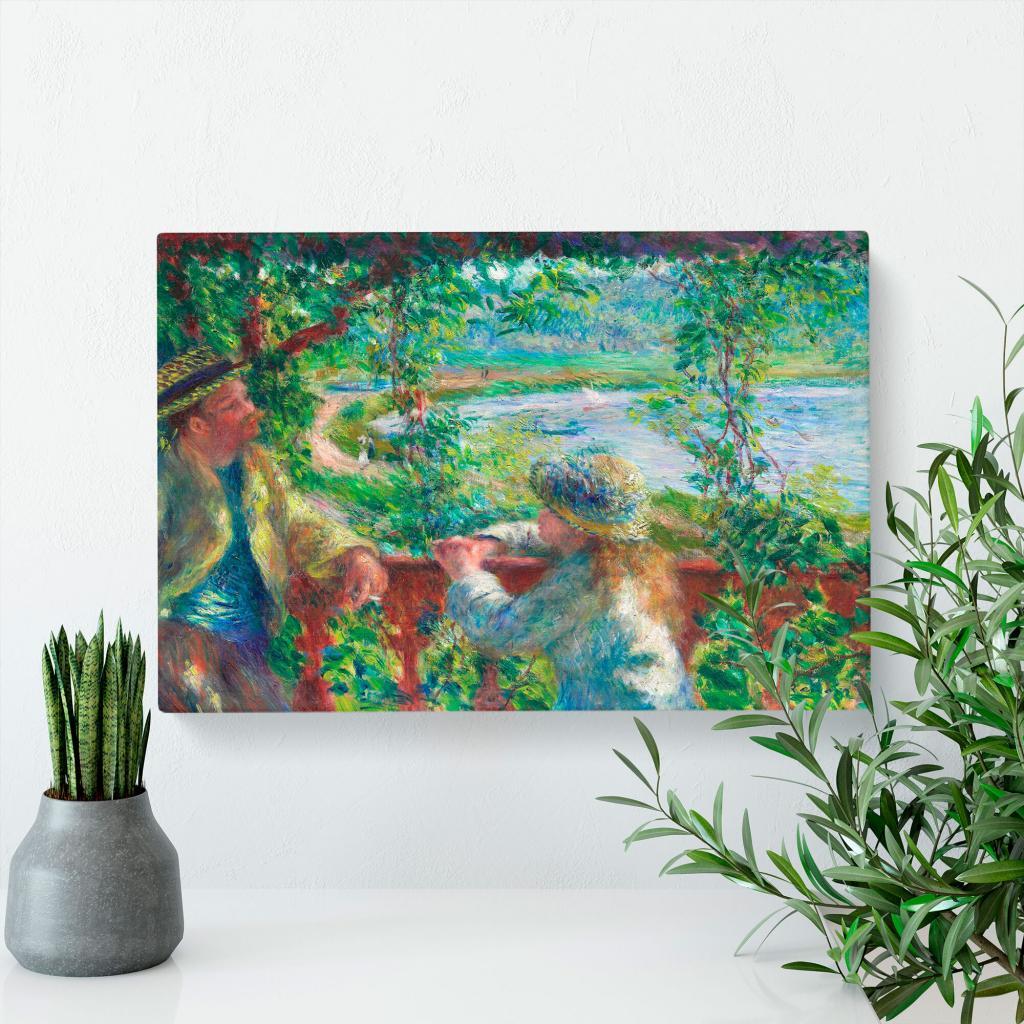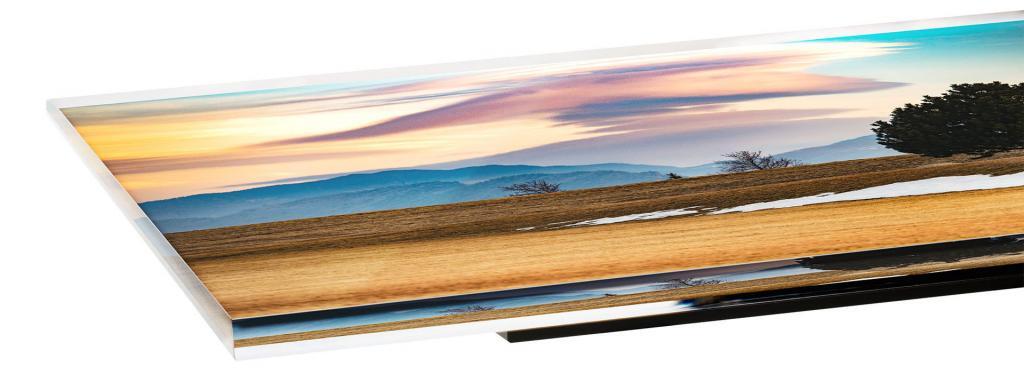
What is the Difference Between an Acrylic Print and a Canvas Print?
From aspiring artists to casual collectors and everyone in-between, questions often come up surrounding the topic of canvas vs acrylic prints. Understanding the difference between an acrylic print and a canvas print can help you better determine which is the best fit for your needs.
Turns out, each has its own distinct set of advantages and disadvantages, each being more suitable for specific applications and goals.
Art Print vs Canvas Print; What Is the Difference Between Them?
In the world of art and photography, there’s more to it than compositions and technique. High quality print solutions can bring your work to life, giving it the justice it deserves and highlighting its best features.
You’ve already put in countless hours getting the right shot or creating the perfect picture, don’t let an inadequate display render your work fruitless.
In this guide we explore the key differences between canvas print and acrylic print, first providing an overview of what makes each type so unique, and then comparing the characteristics in a side-by-side review.
Acrylic Prints
Generically known outside of the art and photography community as plexiglass, Perspex or Lucite, acrylic prints are an oft-favored method of displaying photo and art prints. Referred to as acrylic face mount or photo mounting, acrylic photo prints can be made using one of two distinct processes.
Direct Printing: This process involves printing ‘directly’ to the acrylic sheet or other substrate material and then ‘face mounting’ that to specialized acrylic.
Paper Printing: As opposed to the direct printing method, this method involves printing the photo/art print to a specialized archival paper before face mounting that paper to specialized acrylic.
These prints are adhered to acrylic mounts generally ranging in thicknesses of 1/8 to 1” thick, facing the room/forward.
Considered a more involved but well-worth it process, face-mounting is the preferred method of displaying print art and photography, used by galleries and museums around the world.
In both cases, the finished pieces look like the painted images or photography you might see hanging in a museum — vivid, bright, and seemingly three-dimensional.
No other display technique compares to acrylic face mounts in terms of vividness, three-dimensional depth, vibrancy, detail and longevity. It is for these reasons that this type of display continues to gain popularity among professional photographers and artists, and is the preferred method of display for galleries and museums alike.
Canvas Prints
With canvas prints, canvas material is wrapped or stretched around a frame, after which the desired image is printed directly to the surface of the canvas. The technique used to print on canvas utilizes specialized inkjet printers, resulting in dye sublimation referred to as giclee.
The goal is to create a painting that looks like it was created using oils on canvas, giving it an authentic old-world appeal and adding to its texture and uniqueness. In this way, digital photography and prints can be transformed into a style similar to that of an oil painting.

Acrylic Print VS Canvas Print
Now that you have a better understanding of what each is, let’s see how the two matches up when going head-to-head in this Acrylic Print Vs Canvas Print showdown…
Durability – score for acrylic
Here Acrylic print takes the win (by a mile, or 100). While canvas print can be sprayed with UV protectant, it pales in comparison to the superior protection from UV rays that acrylic print provides. Some acrylic applications can offer up to 70-99% UV protection. Similarly, acrylic offers the best protection against moisture, dust, and dirt. As for abrasion, TruLife acrylic is superbly resistant to scratches from abrasion, whereas canvas is prone to damage.
That said, canvas (being lighter and less rigid), may fair better against dropping and falls where it could be subject to blunt force from hitting a hard floor.
NOTE: Some acrylic prints can yellow, discolor and/or delaminate over time. This is why we use Diasec, a superior acrylic solution guaranteed to provide permanent protection and favored by museums around the world.
Uniqueness – score for acrylic
Although canvas prints can give digitized art a fresh take, closer resembling that of a canvas oil painting, there isn’t much unique about it visually. On the other hand, face mount acrylic prints have only recently become more accessible to the masses, formerly seen only when visiting galleries or museums.
Acrylic prints stand out in a way that no other application and display style does, offering incredible vibrancy and depth that is unmatched by other options.
Appearance/Style – Tie Breaker
Here we give each an equal score. Why? One word: desired aesthetic.
If your goal is to go for contemporary and sleek, then acrylic is a no-brainer, offering sharp imagery and a modern appeal that fits well with industrial, minimalist, and new-age styling.
However, if your goal is to create a warm, old-fashioned, traditional feel, canvas offers enhanced texture and a subdued finish that might be a better fit.
Vibrancy – score for acrylic
Whereas canvas print tends to be more subdued, with colors less bold and ‘duller’, acrylic offers the exact opposite. Leveraging the full reflective capabilities of acrylic, its resistance to light passage results in a display of deep, rich and vibrant colors that can be described as making virtually any print ‘pop’. This makes acrylic a wonderful option for bright vivid pieces or when color contrast can aid in bringing out the best in the piece.
Transporting and Hanging – a win for canvas print
Although canvas is certainly more fragile, it can be professionally packed to avoid damage. The real advantage with canvas over acrylic when transporting is the weight. Large acrylic pieces can be quite heavy and sometimes awkward to carry. Similarly, we’re all familiar with hanging a light canvas print, but acrylic (due to the weight) requires special considerations to ensure it is safe and secure on the wall.
Price / Affordability – a win for canvas print
Although the price of acrylic has gone down significantly, making this display option accessible to the masses, it is still more expensive than canvas. How big of a price difference? Sometimes upwards of 50% less.
Although more expensive, upgrading to acrylic is well-worth the investment, protecting you print and immortalizing it in an acrylic display that will last for decades to come.
Glare – a win for canvas print (but its close)
Acrylic has significantly less glare than does glass, but more so than does canvas. However, our TruLife acrylic offers another 25% reduction in glare, making it a close call between canvas and acrylic when this option is used. With TruLife, your fine art prints will remain virtually glare-free no matter the setting or lighting.

Diasec® – A Grade Above the Rest
A Museum Approved Method of Print Preservation and Display
Used for decades in Europe, Diasec is an innovative and cutting-edge acrylic print solution resulting in a permanent bond that ensures superior longevity. Whereas standard acrylic print can yellow and delaminate, Diasec will never peel, separate or fail.
But that’s not all. Diasec acrylic print mounting results in an unparalleled level of vibrancy, rich colors, and presentation.
A Better Way to Showcase Your Work
Nearly Zero Glare: Your photos will look professional without glare or distortions. No matter the lighting, your work will look immaculate from any angle, virtually absent of glare or reflection.
Brilliant and Vibrant: Bring your photos and images to life with vibrant, rich colors that ‘pop’ off the print.
Impressive Depth: Enhance your artwork with a sense of depth and wonder.
Superior Clarity: Give your piece the clarity it deserves and make its details shine.
Unmatched Durability: A proprietary hard coat makes the surface of the acrylic durable and scratch-resistant.
Better UV Protection: A unique formulation and approach that is engineered to transmit 98% of light while blocking up to 99% of harmful UV rays.
Anti-Static Properties: Specialized acrylic used in the mounting process creates an anti-static effect, preventing dust from accumulating on the viewing side.
Enhanced Shatter Resistance: Shatter-resistant properties, combined with integrated safeguards, protect art, photos and prints from damage.
Virtually Maintenance Free: Acrylic is resistant to static buildup and dust accumulation, and there are no special cleaners required (clean with same products as glass).
Engineered for Permanence: Coated with a formula that lasts longer than conventional polishes.
Other Features Include:
- Utilizes optical lens grade TruLife acrylics
- Printed using Fuji Professional Photographic material or high-grade Lexjet or Giclee papers
- Hand-made with incredible attention to detail
- Customers can choose between hand-enhanced or machine polishes
- Posh satin polished edges using select papers for an unparalleled finish
- Available with square or rounded corners
- Pick your ideal backer (backing material) and hardware options
- Choose between ¼” and 1/8” thicknesses
- Can be ordered to come ready to hang
- Custom sizing at no additional cost
